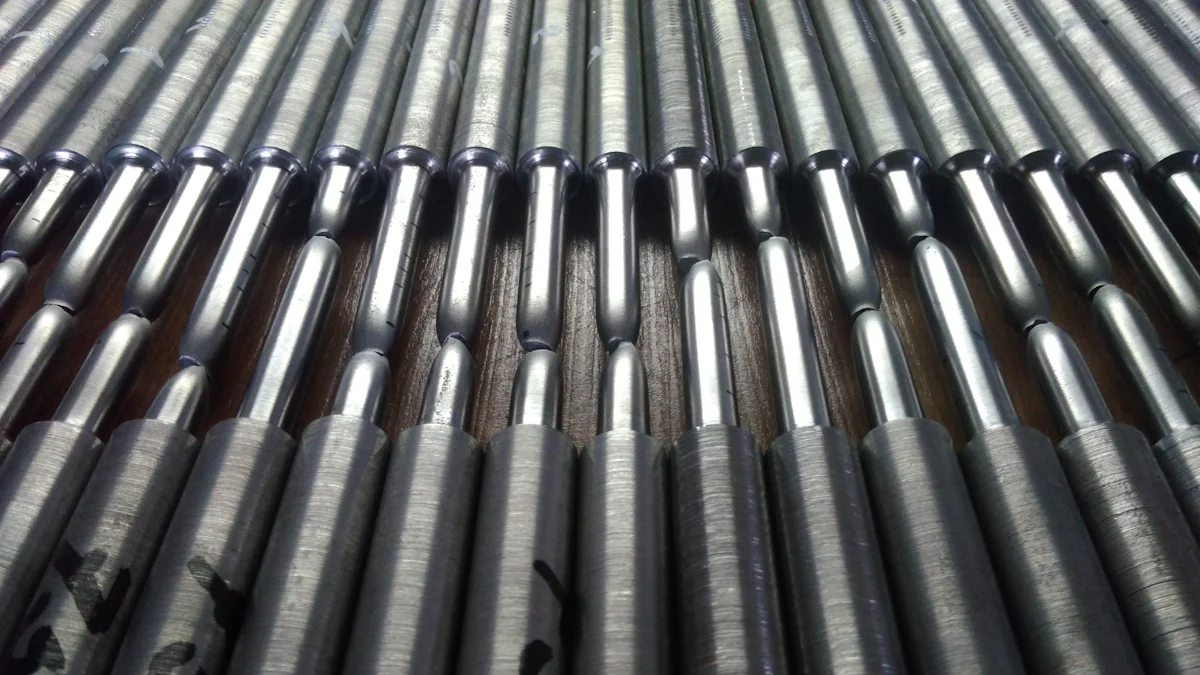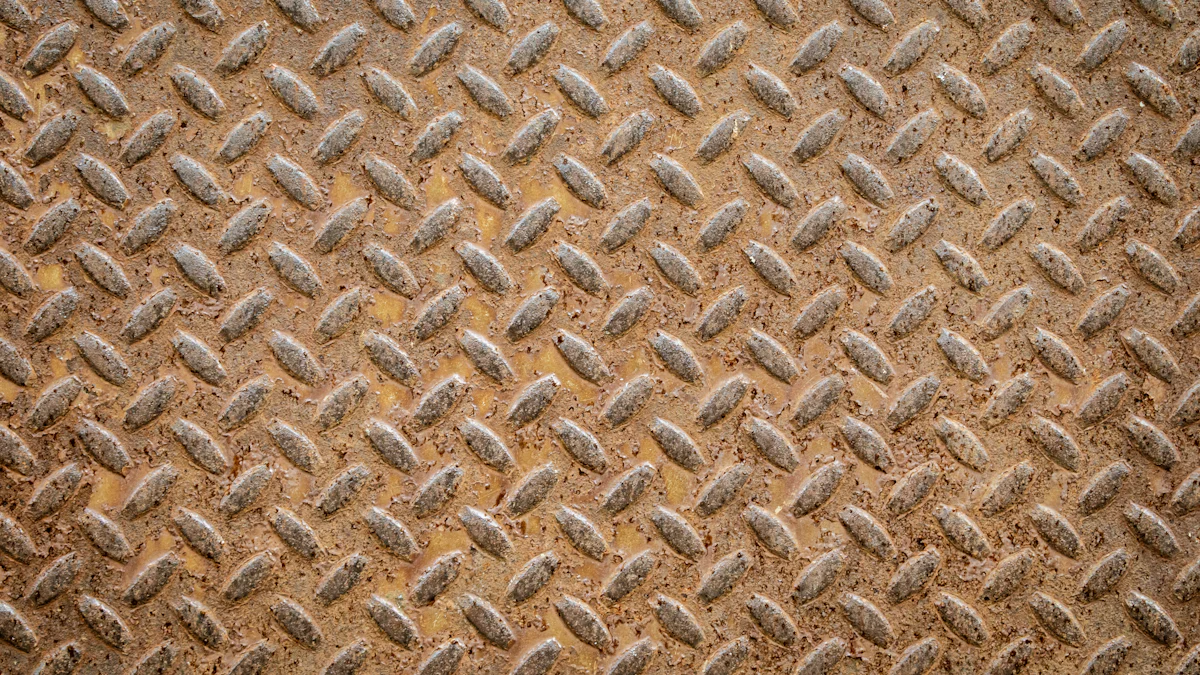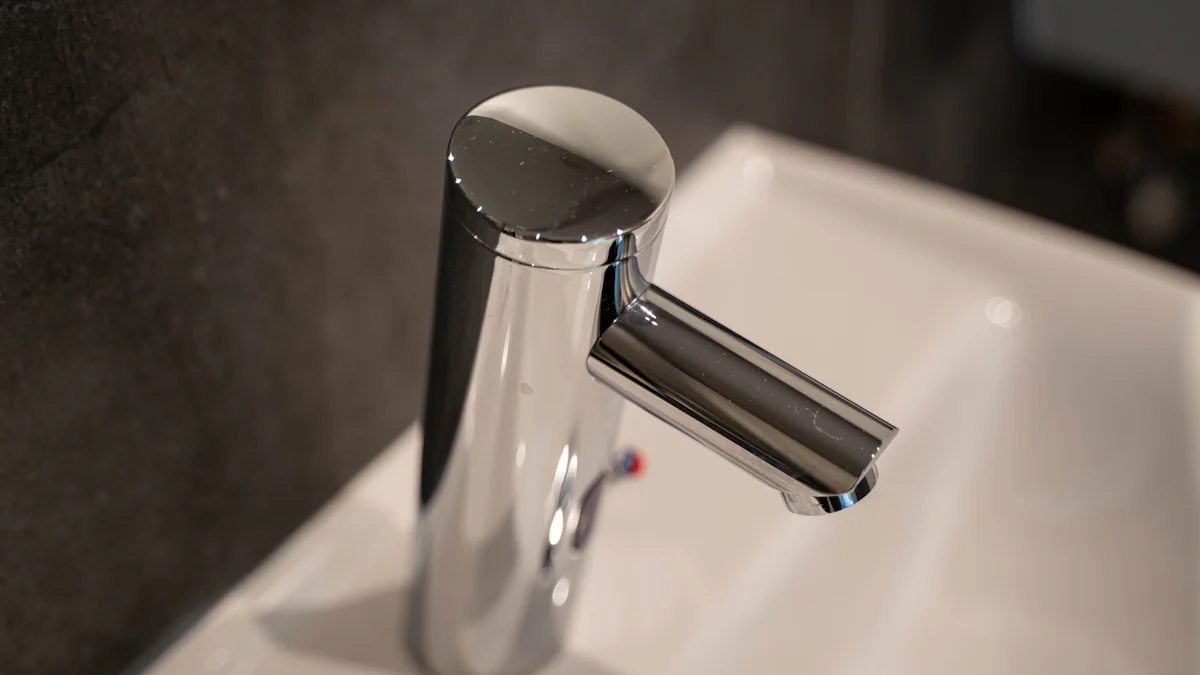
I often get asked, “Is 304 stainless steel magnetic?” The answer isn’t straightforward. In its annealed state, 304 stainless steel is generally non-magnetic due to its austenitic crystal structure. However, when subjected to cold working or deformation, it can exhibit weak magnetism. This change occurs because the internal structure of the steel alters under stress, allowing it to respond slightly to magnetic fields. Understanding these nuances is crucial, especially in applications where magnetism plays a significant role.
Key Takeaways
- 304 stainless steel is generally non-magnetic in its annealed state due to its austenitic crystal structure.
- Cold working can induce slight magnetism in 304 stainless steel by altering its internal structure.
- The iron content in stainless steel significantly influences its magnetic properties; higher iron content typically results in stronger magnetism.
- Austenitic stainless steels like 304 and 316 are non-magnetic in their annealed states, but 304 can become magnetic after cold working.
- Testing for magnetism in stainless steel is simple: use a small magnet to see if it sticks to the steel object.
- Understanding the magnetic properties of stainless steel is crucial for selecting the right material for specific applications, especially in industrial and household settings.
- 304 stainless steel is favored for applications requiring non-magnetic properties, such as kitchen appliances and precision instruments.
Understanding Magnetism in Stainless Steel

What Makes Stainless Steel Magnetic?
Role of Iron Content
I often find that the iron content in stainless steel plays a crucial role in its magnetic properties. Iron, being inherently magnetic, contributes significantly to the magnetism of stainless steel. When I examine different types of stainless steel, I notice that those with higher iron content tend to exhibit stronger magnetic characteristics. This is because the presence of iron allows the material to align its magnetic domains, making it responsive to magnetic fields.
Influence of Crystal Structure
The crystal structure of stainless steel also determines its magnetic behavior. In my experience, the arrangement of atoms within the steel affects how it interacts with magnetic fields. For instance, austenitic stainless steels, like 304, possess a face-centered cubic (FCC) crystal structure. This structure generally renders them non-magnetic. The FCC arrangement disrupts the alignment of magnetic domains, reducing the steel’s overall magnetism. However, when the structure changes, such as through cold working, the steel can become slightly magnetic.
The Austenitic Nature of 304 Stainless Steel
Explanation of Austenitic Structure
Austenitic stainless steels, including 304, have always intrigued me due to their unique properties. These steels contain high levels of chromium and nickel, which stabilize their austenitic structure. This structure is characterized by its face-centered cubic crystal arrangement. The FCC structure not only enhances corrosion resistance but also contributes to the non-magnetic nature of these steels. I find that this makes 304 stainless steel particularly valuable in applications where both corrosion resistance and non-magnetic properties are essential.
Why 304 is Generally Non-Magnetic
When I consider why 304 stainless steel is generally non-magnetic, I focus on its austenitic structure. The high chromium and nickel content in 304 stainless steel stabilizes this structure, preventing the alignment of magnetic domains. As a result, in its annealed state, 304 stainless steel exhibits little to no magnetism. However, I have observed that processes like cold working can alter its structure, inducing slight magnetism. Despite this, 304 remains a popular choice for applications where non-magnetic properties are crucial.
Comparing 304 Stainless Steel with Other Types

Differences Between 304 and 316 Stainless Steel
Composition and Properties
When I compare 304 and 316 stainless steel, I notice distinct differences in their composition and properties. Both belong to the austenitic family, which means they contain high levels of chromium and nickel. However, 316 stainless steel includes molybdenum, enhancing its corrosion resistance, especially in chloride environments. This addition makes 316 more suitable for marine applications. In contrast, 304 stainless steel lacks molybdenum, making it less resistant to certain corrosive conditions but more cost-effective for general use.
Magnetism Comparison
In terms of magnetism, both 304 and 316 stainless steels exhibit non-magnetic properties in their annealed states due to their austenitic crystal structures. However, I find that 304 stainless steel can become magnetic after cold working. This occurs because the mechanical processes alter its internal structure, allowing it to respond to magnetic fields. On the other hand, 316 stainless steel remains largely non-magnetic even after similar treatments. This difference is crucial in applications where magnetism must be minimized.
Ferritic and Martensitic Stainless Steels
Characteristics and Magnetism
Ferritic and martensitic stainless steels present a different set of characteristics compared to austenitic types like 304 and 316. Ferritic stainless steels contain higher iron content and lack nickel, which makes them inherently magnetic. They offer good corrosion resistance and are often used in automotive and industrial applications. Martensitic stainless steels, known for their hardness and strength, also exhibit magnetic properties. These steels are often used in cutlery and surgical instruments due to their ability to be heat-treated for increased hardness.
Common Applications
In my experience, ferritic stainless steels find common applications in automotive exhaust systems and architectural structures due to their magnetic nature and corrosion resistance. Martensitic stainless steels, with their high strength and magnetic properties, are ideal for tools and blades. Understanding these differences helps in selecting the right type of stainless steel for specific applications, especially when magnetism plays a role in the material’s performance.
Practical Implications of Magnetism in Stainless Steel
Applications Where Magnetism Matters
Understanding the magnetic properties of stainless steel proves essential in various applications. I often encounter situations where magnetism plays a crucial role, especially in industrial and household settings.
Industrial Uses
In industrial environments, the magnetism of stainless steel can significantly impact performance. For instance, in the food industry, magnetic stainless steel helps remove metal contaminants from food products. This ensures safety and quality control. Additionally, magnetic properties are vital in manufacturing processes where magnetic separation is necessary. I have seen how ferritic and martensitic stainless steels, known for their strong magnetic properties, are ideal for fasteners and mechanical components. These materials ensure that equipment functions efficiently without interference from external magnetic fields.
Household Applications
In household applications, magnetism also matters. I find that non-magnetic stainless steel, like 304, is often preferred for kitchen appliances and utensils. This choice prevents interference with electronic devices and ensures that appliances operate smoothly. For example, non-magnetic screws in precision instruments prevent disruptions in sensitive equipment. This is crucial in maintaining the accuracy and functionality of household gadgets.
Simple Test for Magnetism in Stainless Steel
Determining whether stainless steel is magnetic can be straightforward. I often use a simple test to assess the magnetism of stainless steel items.
How to Perform the Test
To perform the test, I take a small magnet and bring it close to the stainless steel object. If the magnet sticks, the steel exhibits magnetic properties. This indicates the presence of a ferritic or martensitic structure. If the magnet does not stick, the steel is likely austenitic, like 304, in its annealed state.
Interpreting the Results
Interpreting the results helps in selecting the appropriate type of stainless steel for specific applications. If the steel is magnetic, it may be suitable for applications requiring strong magnetic properties. Conversely, non-magnetic stainless steel is ideal for environments where magnetic interference must be minimized. Understanding these nuances aids in making informed decisions about material selection.
In conclusion, the question “is 304 stainless steel magnetic” reveals a nuanced answer. In its annealed state, 304 stainless steel remains non-magnetic due to its austenitic crystal structure. However, cold working or specific treatments can induce slight magnetism by altering its internal structure. Understanding these properties is crucial for selecting the right material for applications where magnetism matters. Testing for magnetism helps in making informed decisions, ensuring the chosen stainless steel meets the specific needs of industrial or household applications.
FAQ
Is 304 Stainless Steel Magnetic?
I often get asked about the magnetic properties of 304 stainless steel. While 304 stainless steel contains chromium and nickel, which are ferromagnetic materials, its magnetism is quite weak. When exposed to an external magnetic field, it may show some attraction, but this is minimal compared to materials like iron or cobalt alloys.
Why Does 304 Stainless Steel Become Magnetic After Cold Working?
Cold working can alter the internal structure of 304 stainless steel. I have observed that this process can induce slight magnetism. The mechanical stress changes the arrangement of atoms, allowing the steel to respond more to magnetic fields.
How Can I Test If My Stainless Steel Is Magnetic?
Testing for magnetism in stainless steel is simple. I usually take a small magnet and bring it close to the steel object. If the magnet sticks, the steel has magnetic properties. This test helps determine if the steel is ferritic or martensitic, or if it remains austenitic like 304 in its annealed state.
What Are the Key Differences Between 304 and 316 Stainless Steel?
When comparing 304 and 316 stainless steel, I notice differences in composition and properties. Both are austenitic, containing high levels of chromium and nickel. However, 316 includes molybdenum, enhancing its corrosion resistance. This makes 316 more suitable for marine environments, while 304 is more cost-effective for general use.
Can 304 Stainless Steel Be Used in Applications Where Magnetism Matters?
In my experience, 304 stainless steel is often chosen for applications where non-magnetic properties are crucial. Its austenitic structure ensures minimal magnetic interference, making it ideal for kitchen appliances and precision instruments.
What Makes Ferritic Stainless Steels More Magnetic Than Austenitic Types?
Ferritic stainless steels contain higher iron content and lack nickel, making them inherently magnetic. I find that their crystal structure allows for better alignment of magnetic domains, resulting in stronger magnetic properties compared to austenitic types like 304.
Are There Any Household Applications Where Magnetism in Stainless Steel Is Important?
Yes, magnetism in stainless steel matters in household applications. I often see non-magnetic stainless steel used in kitchen appliances to prevent interference with electronic devices. This ensures smooth operation and prevents disruptions in sensitive equipment.
How Does the Crystal Structure Affect the Magnetism of Stainless Steel?
The crystal structure plays a significant role in the magnetism of stainless steel. In my observations, austenitic stainless steels like 304 have a face-centered cubic (FCC) structure, which disrupts the alignment of magnetic domains. This reduces their overall magnetism compared to other structures.
Why Is 304 Stainless Steel Popular Despite Its Weak Magnetism?
304 stainless steel remains popular due to its excellent corrosion resistance and cost-effectiveness. I find that its non-magnetic properties are an added advantage in many applications, making it a versatile choice for both industrial and household uses.
Can Cold Working Be Reversed to Reduce Magnetism in 304 Stainless Steel?
Reversing the effects of cold working to reduce magnetism in 304 stainless steel can be challenging. Annealing the steel can restore its austenitic structure, reducing magnetism. However, this process requires precise control of temperature and conditions.
